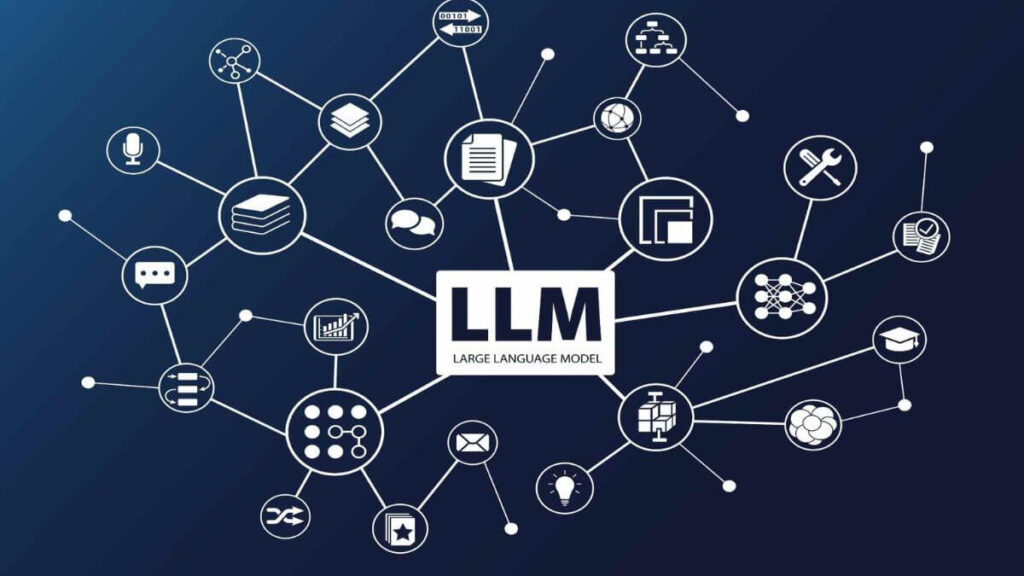Large language models (LLM) are a type of AI that understands and generates human-like text. These models are at the heart of many AI applications today. From chatbots to advanced text generation, LLMs are shaping the future of communication.
In this blog, we will explore what LLMs are, why they matter, how they work, and their role in modern technology.
What Is a Large Language Model (LLM)?
A Large Language Model is an artificial intelligence tool designed to understand and generate human language. It learns from massive datasets and generates text-based responses. It processes vast amounts of text data to learn patterns, grammar, and context.
This allows it to create human-like text responses, complete tasks, or generate ideas. Some famous examples include OpenAI’s GPT and Google’s BERT models.
Why are Large Language Models Important?
LLMs offer a significant advantage in understanding human language. They help automate tasks that require a human-like understanding of language. These models improve accuracy in voice assistants, make chatbots more responsive, and enhance content creation.
Businesses use LLMs to improve customer interactions, reduce operational costs, and handle large-scale text data. They save time by providing quick answers and improving communication efficiency.
Moreover, LLMs are important because they can handle massive amounts of information. This ability allows businesses to process large datasets and extract useful insights. LLMs also play a key role in fields like education, healthcare, and customer support.
How do Large Language Models work?
LLMs learn from vast amounts of text data. They are trained on huge datasets that contain a wide range of text, including books, articles, and websites.
These models predict the next word or phrase based on the tokens. When you input a query, the model uses its training to predict the most likely response.
The model breaks down your input into small parts called tokens. It then processes these tokens to understand the context and meaning. After that, it generates a response that matches the input. The larger the model, the more accurate its predictions.
LLMs rely on neural networks to understand patterns in data. The more data they analyze, the better they become at predicting language patterns. This allows them to generate responses that feel natural to human readers.
What are the applications of Large Language Models?
LLMs are widely used in various industries. Some common applications include:
- Chatbots and Virtual Assistants: LLMs power virtual assistants like Siri and Google Assistant. These models help in understanding user commands and generating human-like responses.
- Content Creation: Many tools use LLMs to assist writers by generating text, headlines, or summaries.
- Translation Services: Models like GPT can translate text between languages with high accuracy.
- Healthcare: LLMs assist in processing patient data and generating reports or summaries for doctors.
- Education: LLMs help in creating personalized learning experiences, answering questions, and tutoring students.
- Customer Support: Businesses use LLMs to automate responses to common customer inquiries, reducing wait times.
- Code Generation: Some advanced LLMs can even generate and debug computer code, helping programmers in their tasks.
How are Large Language Models Trained?
Training a large language model requires vast datasets and powerful computing resources. LLMs learn by processing large amounts of text data. The model predicts the next word in a sentence and adjusts when wrong.
The model learns by predicting the next word in a sentence and adjusting itself when it gets the prediction wrong. This process repeats millions or even billions of times until the model becomes very good at generating text.
The training process requires powerful computing power and can take weeks or months. Companies use high-end servers and advanced algorithms to train these models. The result is an AI system that can generate human-like text with impressive accuracy.
What is the Future of LLMs?
The future of LLMs looks very promising. As technology advances, LLMs will improve in both accuracy and efficiency. They will become even better at understanding complex queries and providing relevant information.
Integration with other technologies, like robotics, will create exciting opportunities. For example, LLMs could help robots understand and respond to human language in real-time.
However, with the rapid growth of LLMs, there are ethical concerns. Companies will need to focus on using LLMs responsibly to avoid misuse or harmful applications.
Career Opportunities in LLM
The rise of LLMs has opened up many career opportunities. Here are some key roles related to LLMs:
- Data Scientists: Data scientists train models and analyze large datasets for various industries.
- AI Engineers: AI engineers design, develop, and implement LLMs for practical use.
- NLP Specialists: Natural Language Processing (NLP) experts work on improving how computers understand human language.
- Machine Learning Engineers: These professionals build and optimize the algorithms that power LLMs.
- AI Researchers: Researchers study ways to improve LLMs and explore new applications.
- Product Managers: Product managers work on integrating LLMs into products and services that consumers use.
You can also explore jobs in AI ethics, development, and training.
Large language models have revolutionized how we interact with technology. Their ability to understand and generate human-like text has opened doors to endless possibilities.
LLMs will continue to play a crucial role in various industries. Whether you are interested in a career in AI or just curious about technology, LLMs will continue to play a significant role in shaping the future of communication and automation.

